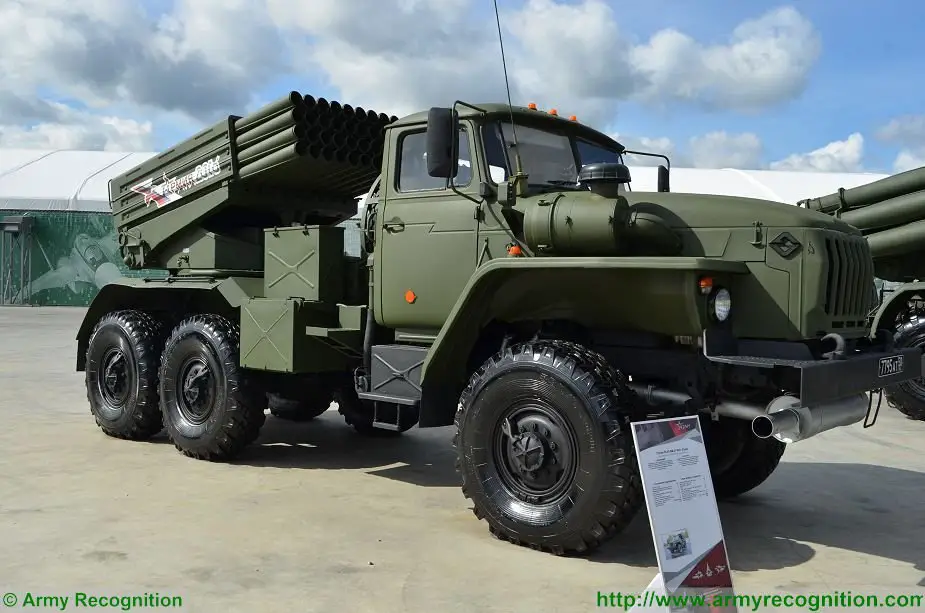The supplies of Grad-M upgraded MLRS will begin in 2021. The upgraded Soviet-era weapon will independently aim and calculate the number of projectiles. It is fully digital and integrated into modern automatic controls. Experts believe Grad-M will make artillery units operate faster and more effectively, the Izvestia daily writes.
Follow Army Recognition on Google News at this link

9K51 BM-21 Grad MLRS (Picture source: Army Recognition)
Russian Defense Ministry sources said the first upgraded Grad will be supplied to the troops in 2021. The design of the vehicle which fought in dozens of wars and conflicts remained unchanged. The electronic equipment was completely upgraded. The vehicle is computerized and has a modern control system. Previously, the commander had to make all the calculations and aim the weapon. Now it operates automatically. The commander has only to press the fire button. The upgraded Grad has been integrated into the closed data transmission system and modern automatic controls. They make it possible to remotely control the vehicle in real time.
The 122mm Grad BM-21 multiple launch rocket system was designed and supplied in the 1960s. It was so successful that the MLRS is still operated by the armies of over fifty countries of Asia, Africa and Latin America. The Soviet army, now the Russian army operates them in artillery regiments of motorized rifle and tank divisions.
Russia has been replacing Grad with 122mm Tornados of late. However, the army still operates a lot of Grad MLRS. Open sources said there are close to 500 operational systems and many MLRS are in warehouses.
Grad modernization for little money brings it close to Tornado-G, expert Viktor Murakhovsky said. “The automatic guidance and fire control system increased the autonomy of the MLRS. Previously, they could fire in a battery, as only its commander had the necessary information. He guided all the launchers at one target. Automatic control can operate one vehicle and scatter others to decrease the risk of destruction by drones,” he said.
The upgraded Grad needs less time to open fire thanks to its automatic information system. The vehicle receives a full package of data and the crew have to do a minimum of operations. “It is important that the upgraded vehicle will have GLONASS satellite navigation. Fire preparations begin with exact determination of the location. Previously, the commander had to do the positioning himself ; now he does not have to waste time on it,” Murakhovsky said.
A Grad MLRS comprises a BM-21 system on Ural chassis, fire controls and a 9T254 transloader. A Grad battery also has got a Bereza 1V110 command vehicle. 122mm unguided jet projectiles have a range from 5 to 40 km. One combat vehicle has 40 tubes.
In the summer of 2020, the missile and artillery troops tested new automatic controls which unite Tornado-S MLRS and Iskander-M launchers. A missile battalion of the Eastern Military District operated together with MLRS battalion of the Southern district. A new guided Tornado-S projectile was tested, the Izvestia said.
© Copyright 2020 TASS / Army Recognition Group SPRL. All rights reserved. This material may not be published, broadcast, rewritten or redistributed.














